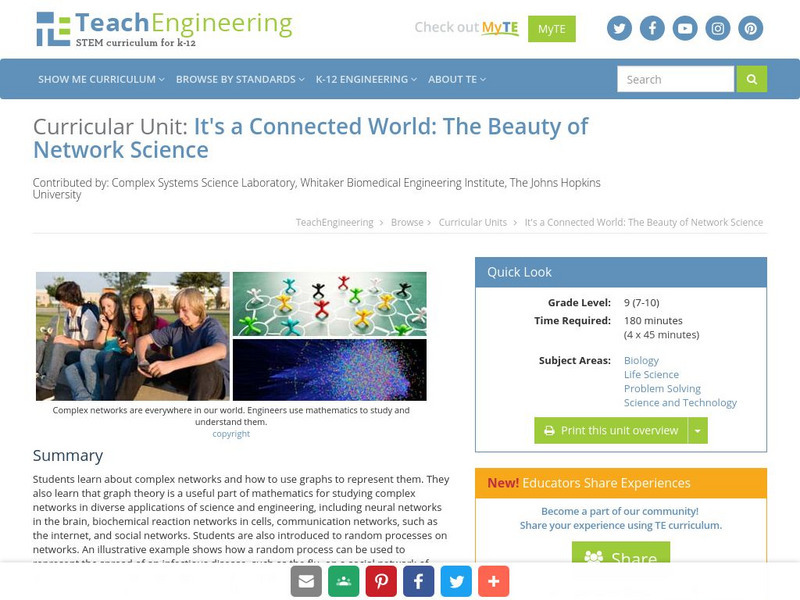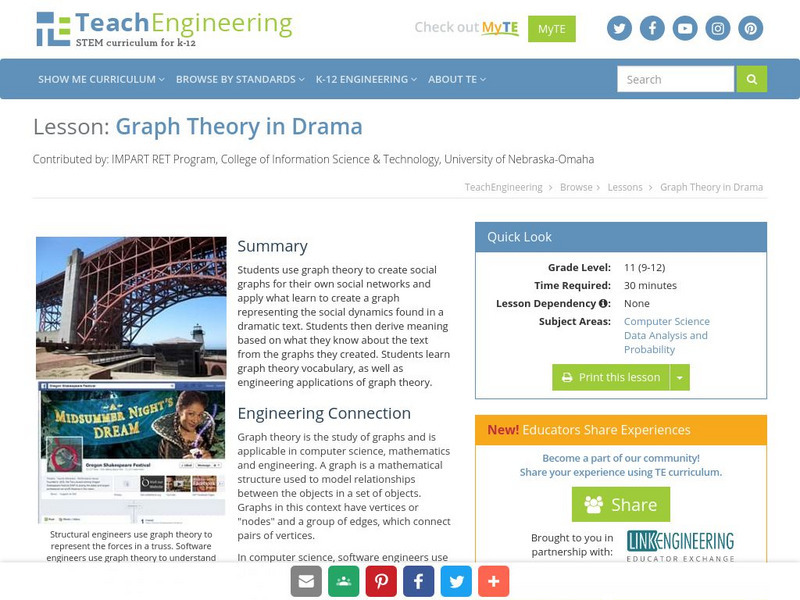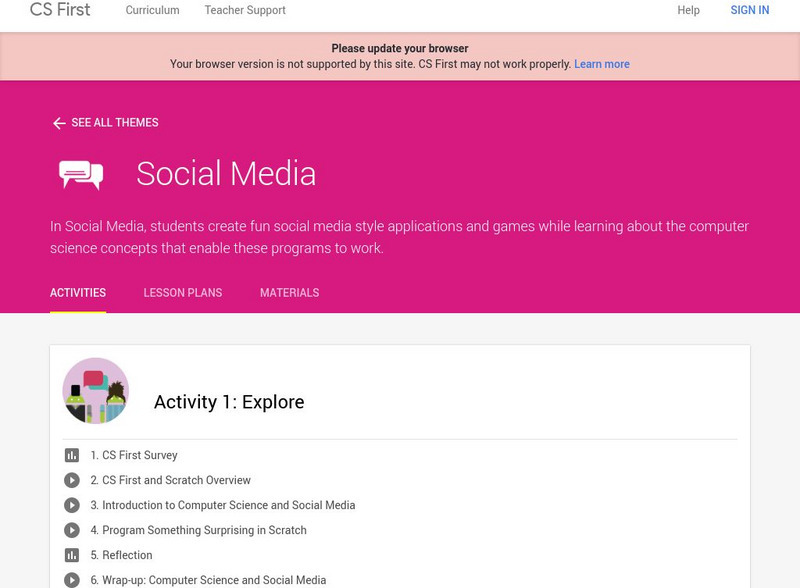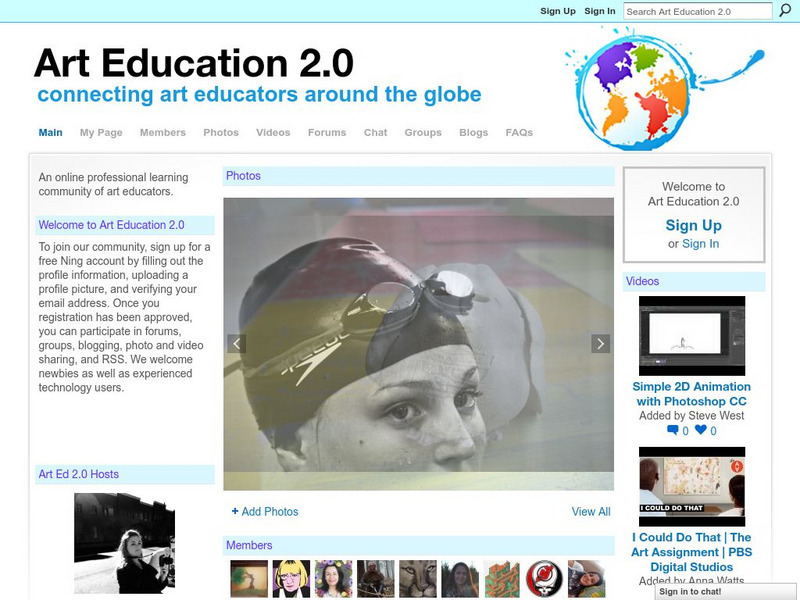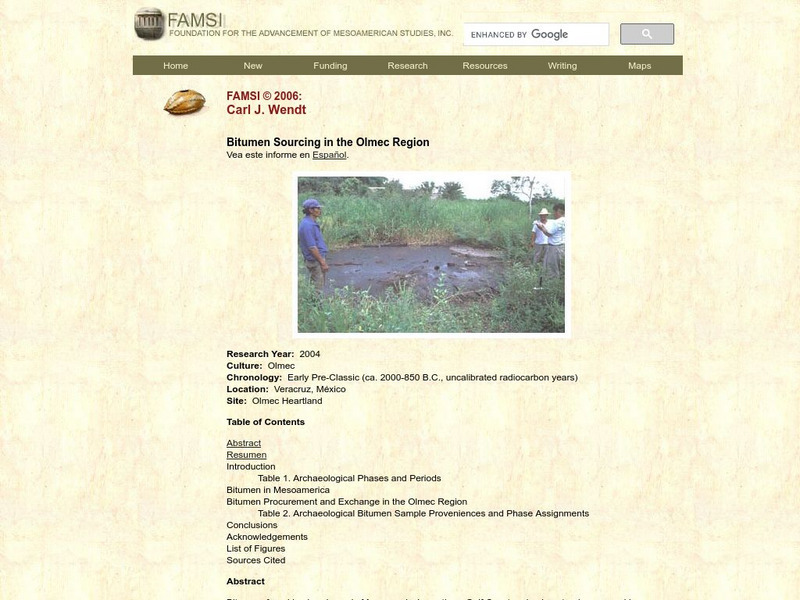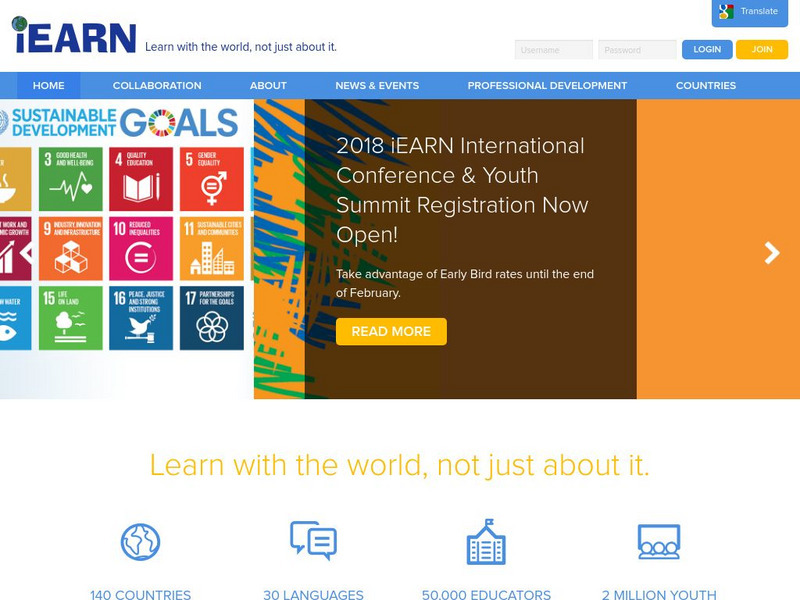Childnet
Childnet: Online Safety: Young People and Social Networking Services (Leaflet)
This is a guide for parents, carers and teachers about the safe and responsible use of social networking services. By understanding these services and their potential risks you can help to support your child in choosing an appropriate...
Other
Childnet International: Digizen: Social Networking
Most students participate in social networking applications such as Facebook, MySpace, or Twitter. This site presents the benefits and risks of using social networking tools in education. The site also presents examples of successful...
TeachEngineering
Teach Engineering: Graphing Your Social Network
Students analyze their social networks using graph theory. They gather data on their own social relationships, either from Facebook interactions or the interactions they have throughout the course of a day, recording it in Microsoft...
Other
Connect Safely: Connect Safely: Smart Socializing Starts Here
This resource offers students and adults information in order to help young people socialize safely online.
Other
Lego: My Lego Network
Free and safe social networking site dedicated to young students who share the love for the children's building blocks LEGOs. Students create their own page for the purpose of trying challenging blueprints or sharing their own creations.
TeachEngineering
Teach Engineering: It's a Connected World: The Beauty of Network Science
Students learn about complex networks and how to use graphs to represent them. They also learn that graph theory is a useful part of mathematics for studying complex networks in diverse applications of science and engineering, including...
TeachEngineering
Teach Engineering: Start Networking!
To get a better understanding of complex networks, students create their own, real social network example by interacting with their peers in the classroom and documenting the interactions. They represent the interaction data as a graph,...
TeachEngineering
Teach Engineering: Graph Theory in Drama
Students use graph theory to create social graphs for their own social networks and apply what learn to create a graph representing the social dynamics found in a dramatic text. Students then derive meaning based on what they know about...
Google
Cs Education at Google: Cs First: Social Media Theme
A set of eight activities that teach students basic computer science concepts using the programming language Scratch. Includes lots of additional supports for teachers. All materials are free and teachers sign in to create a class. This...
TeachEngineering
Teach Engineering: Complex Networks and Graphs
Students learn about complex networks and how to represent them using graphs. They also learn that graph theory is a useful mathematical tool for studying complex networks in diverse applications of science and engineering, such as...
Other
Art Education 2.0: Using New Technology in Art Classrooms
Art Education 2.0 is a social networking site for art teachers run by university professor Craig Roland. Find answers, inspiration, and more from dozens of other art teachers just like yourself who have questions and ideas to share.
TED Talks
Ted: Ted Ed: Clay Shirky: How Social Media Can Make History
Clay Shirky shows how social media services such as Facebook, Twitter and TXTs help citizens in repressive regimes to report on real news, thus changing the nature of politics. [15:49]
New York Times
New York Times: Learning Network: 401 Prompts for Argumentative Writing [Pdf]
This is a list of 401 writing prompts for argumentative writing including topics about social media and cellphones, technology in the schools, gender issues, sports, TV, movies, video games, and much more. W.9-10.10 Write Routinely....
Louisiana Department of Education
Louisiana Doe: Curriculum Hub: Ela Guidebooks: Teenage Brain: Review Claims About Social Media
Review claims made in "Teens: This Is How Social Media Affects Your Brain."
Goodwill
Gcf Global: Meetup
In this tutorial, learn more about navigating this popular in-person networking site, which finds people with similar interests.
Foundation for the Advancement of Mesoamerican Studies
Famsi: Bitumen Sourcing in the Olmec Region (2004)
Study suggests that chemical studies on bitumen (hydrocarbon material) is a feasible method of studying inter-regional trade and social networks. Includes a chart defining archaeological phases of the Olmec Culture.
Other
Ryerson University: Digital Footprint: A Positive Digital Image [Pdf]
Leaving a positive digital footprint can help you stand out even in the most competitive circumstances. It may take some time and effort to build, maintain or repair a positive image; however, making informed choices and presenting a...
Goodwill
Gcf Global: Linked in Basics
In this tutorial, learn how to create and maintain an account on this popular networking and career-focused social media site.
Other
I*earn (International Education and Resource Network)
This nonprofit organization creates structured projects that facilitate engaged learning and youth making a difference on an International scale. Project areas include interdisciplinary topics such as the environment/science,...
Other
History News Network
The History News Network publishes articles written by historians on current events. This is a rich resource for both teachers and students. The site includes historians' blogs and lesson plans.
Goodwill
Gcf Global: Facebook
Learn how to create, use, and maintain a Facebook page, including understanding the social media site's privacy policies and settings.
Childnet
Childnet: Online Safety: Sharenting
Sharenting is when a parent or care-giving uses the internet to share news, images, videos, and information about their child. It mostly takes place on social media and in some cases on blogging sites. This site features questions,...
CommonLit
Common Lit: "Online Identity" by Common Lit Staff
The Internet has heavily shaped our notion of identity. On the Internet, people can create a multitude of personas, some of which can be created with false information. As you read, take notes on the ways in which people express their...
Other
Literacy Works: Thanks to the Web, We're Alone Together and Loving It
While this resource was developed to support adult literacy learners, it can easily be used from junior grades and up. After reading an article about how people today interact on the Internet, students complete a variety of vocabulary...


